Economic Benefits of Renewable Resources: Insights for All
Category: Renewable Energy
Unlocking the Economic Power of Renewable Resources
Whether you're new to renewable energy or an electrical engineer keen on the latest innovations, understanding the economic benefits of renewable resources is essential. You likely found this post while exploring how wind, solar, and cutting-edge renewable technologies don't just help the planet but also open up new financial opportunities and efficiencies. Perhaps you're curious about how these resources create jobs, lower energy costs, or stimulate local economies through technology advancements. This blog goes beyond the usual surface-level discussion, offering clear, science-backed insights tailored to both beginners and technical readers. We’ll delve into how economic advantages emerge from innovations in wind turbines and solar panels, analyze cost trends, and highlight policy impacts. By combining technical depth with accessibility, this post aims to equip you with a comprehensive perspective on why investing in renewables makes economic sense today and for the future. Continue reading to discover the key economic drivers behind renewable energy and how you can leverage this knowledge whether you’re designing systems, advising stakeholders, or simply expanding your understanding.
- Unlocking the Economic Power of Renewable Resources
- Overview of Renewable Resources and Their Economic Significance
- Job Creation and Workforce Development in Renewable Energy
- Cost Reduction Trends: The Declining Prices of Wind, Solar, and Emerging Technologies
- Energy Independence and Reduced Import Costs
- Local Economic Growth and Community Benefits from Renewable Projects
- Investment Opportunities and Financial Incentives in Renewables
- Grid Modernization and Economic Efficiency Gains
- Environmental Externalities and Cost Savings: Quantifying the Economic Advantages
- Innovation and Emerging Technologies Driving Future Economic Benefits
Overview of Renewable Resources and Their Economic Significance
Renewable resources are naturally replenished energy sources that include wind, solar, hydro, geothermal, and emerging technologies such as tidal and biomass energy. Unlike fossil fuels—coal, oil, and natural gas—that are finite and release greenhouse gases, renewables offer a sustainable alternative with minimal environmental impact. The transition to renewable energy not only addresses climate change but also unlocks profound economic benefits on global and local scales.
From an economic perspective, renewable resources drive cost reductions, create new industries, and enhance energy security. Their deployment stimulates job creation across manufacturing, installation, maintenance, and innovation sectors. Moreover, renewables reduce operational costs over time due to zero fuel expenses and declining technology prices, directly benefiting consumers and businesses alike. This contrasts sharply with fossil fuel markets, which are subject to price volatility and supply constraints. The growing integration of renewables also spurs technological advancements, fostering competitive innovation in energy storage, smart grids, and power electronics. Together, these factors position renewable resources as critical engines of economic growth, resilience, and sustainability in the evolving global energy landscape.
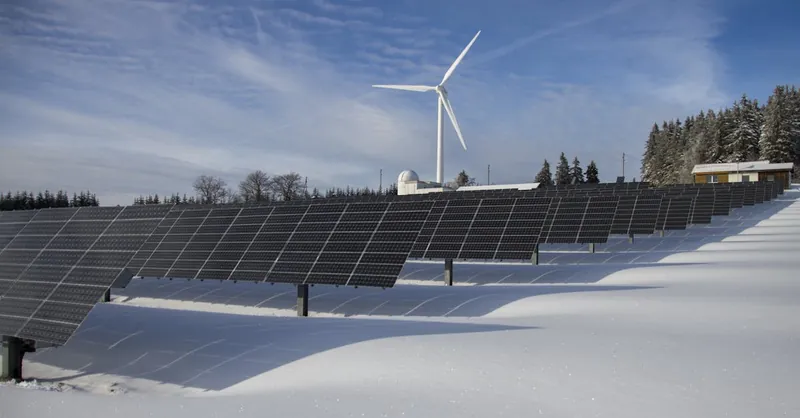
Image courtesy of Pixabay
Job Creation and Workforce Development in Renewable Energy
One of the most compelling economic benefits of renewable energy lies in its ability to generate diverse and sustainable employment opportunities across multiple sectors. Unlike traditional fossil fuel industries that often face automation and resource depletion challenges, renewable energy industries such as wind, solar, and emerging technologies require a dynamic workforce engaged in manufacturing, installation, operations, and ongoing maintenance. This broad spectrum of jobs ranges from highly specialized engineering positions designing advanced turbine blades or photovoltaic cells to skilled technicians installing solar panels and electricians integrating renewable solutions into existing grids.
Key Employment Sectors in Renewables
- Manufacturing: Renewable energy manufacturing employs workers producing critical components like solar panels, wind turbine blades, inverters, and energy storage systems. Technological innovation continually drives demand for precision engineering and advanced materials expertise.
- Installation and Construction: These roles involve site assessment, foundation laying, turbine erection, solar farm setup, and grid connection—requiring well-trained crews and project managers. The geographically distributed nature of renewable projects creates jobs locally, boosting regional economies.
- Operations and Maintenance (O&M): Maintaining the performance and reliability of renewable assets demands ongoing inspection, troubleshooting, and repairs by technicians. As assets age and new technologies emerge, O&M roles evolve and expand.
- Research, Development, and Innovation: Continuous innovation in battery storage, smart grid integration, and emerging renewables like tidal or hydrogen energy fuels demand for scientists and engineers who push the boundaries of technology and efficiency.
These multifaceted employment opportunities contribute to robust workforce development programs, emphasizing skill acquisition and career growth in clean energy fields. Governments and industry leaders alike invest significantly in training and educational initiatives, ensuring the renewable energy sector remains a beacon for long-term economic resilience and innovation-driven job growth. This makes renewable energy not only a cornerstone of a sustainable future but also a vibrant ecosystem for career advancement across disciplines.
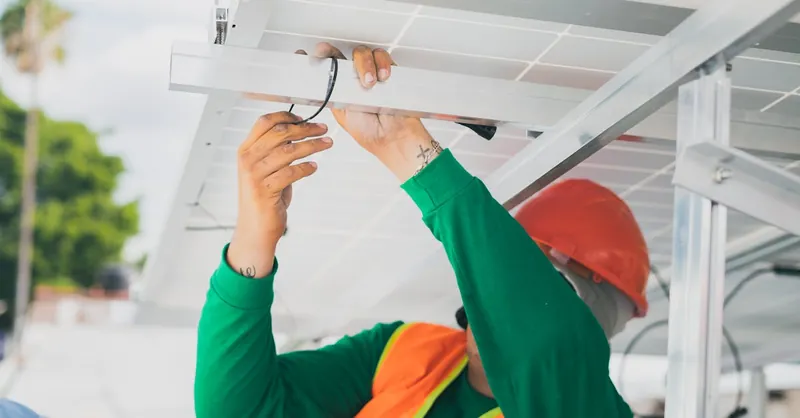
Image courtesy of Los Muertos Crew
Cost Reduction Trends: The Declining Prices of Wind, Solar, and Emerging Technologies
A pivotal economic driver behind the widespread adoption of renewable energy is the consistent and significant decline in costs associated with wind, solar, and emerging renewable technologies. Over the past decade, technological innovation coupled with economies of scale have propelled renewable energy from niche solutions to some of the lowest-cost sources of electricity worldwide. This trend is crucial not only for policymakers and investors but also for engineers and industry professionals focusing on designing cost-effective, efficient renewable systems.
Historical Cost Curves and Key Drivers
-
Innovation in Technology
Advances in materials science, aerodynamics, and manufacturing techniques have dramatically improved the efficiency and reliability of wind turbines and photovoltaic (PV) panels. Innovations such as bifacial solar cells, larger offshore wind turbines, and digital control systems reduce capital expenditure (CapEx) and operational costs (OpEx). These improvements boost energy yield per unit capacity, lowering the levelized cost of electricity (LCOE) and improving project economics. -
Economies of Scale
As deployment of renewables accelerates globally, large-scale manufacturing lowers production costs through mass fabrication and standardized components. Utility-scale solar farms and wind projects benefit from bulk purchasing, streamlined installation, and optimized supply chains. This drives a virtuous cycle where increased deployment leads to cost reductions, stimulating further investment and adoption. -
Competitive Supply Chains and Financing Innovations
Growing competition among equipment suppliers and the emergence of innovative financing models—such as power purchase agreements (PPAs) and green bonds—reduce upfront investment barriers. Financial innovations also mitigate project risks, attracting broader capital inflows at lower costs.
| Technology | 2010 Cost (USD/kW) | 2023 Cost (USD/kW) | Approximate Cost Reduction |
|---|---|---|---|
| Onshore Wind | 1,500 | 900 | ~40% |
| Solar PV | 2,000 | 600 | ~70% |
| Offshore Wind | 4,000 | 2,500 | ~38% |
| Battery Storage | 1,200 per kWh | 300 per kWh | ~75% |
Emerging Technologies Follow Similar Downward Cost Trajectories
Beyond established wind and solar markets, emerging renewable technologies—such as tidal energy, advanced biomass, and green hydrogen—are beginning to experience cost declines driven by research and pilot deployment successes. Early-stage innovations in energy storage, enabled by rapidly decreasing battery costs, also enhance renewable grid integration, indirectly driving down system-wide expenses.
In summary, cost reduction trends highlight that renewables are not only environmentally responsible choices but also financially predictable and increasingly competitive energy options. The ongoing innovation and scaling of these technologies reinforce their role as economically attractive, reliable, and scalable solutions for power generation moving forward.

Image courtesy of Kindel Media
Energy Independence and Reduced Import Costs
One of the most strategic economic benefits of renewable energy is its capacity to enhance energy independence by significantly reducing reliance on imported fossil fuels. Traditionally, many countries spend substantial portions of their GDP on importing oil, coal, and natural gas, exposing their economies to volatile global commodity prices, geopolitical tensions, and supply disruptions. Renewable resources—such as wind and solar—derive from abundant local sources, which means nations can generate electricity domestically, leading to improved trade balances and greater control over their energy futures.
How Renewables Foster Energy Security and Economic Stability
-
Reducing Fuel Import Expenditures
By substituting imported fuels with domestically produced renewable electricity, countries lower their import bills, retaining capital within the local economy. This circulation of funds stimulates investment in infrastructure, R&D, and job creation across renewable sectors. -
Mitigating Price Volatility Risks
Fossil fuel markets are subject to unpredictable price swings due to political instability, OPEC production decisions, and supply-chain disruptions. Renewable energy costs, by contrast, are mostly upfront capital investments with negligible fuel expenses, offering stable and predictable energy pricing. -
Enhancing National Security
Dependence on imported fuels often entails reliance on international players, which may be affected by diplomatic conflicts or trade restrictions. Renewable energy deployment decentralizes power generation, increases grid resilience, and reduces vulnerability to external shocks. -
Stimulating Technological Sovereignty
Investing in domestic renewable technologies cultivates homegrown innovation and manufacturing capabilities, positioning countries as competitive players in the global green economy.
Overall, shifting to renewables strengthens a nation’s economic resilience by localizing energy production, conserving foreign currency reserves, and creating a buffer against external market fluctuations. For engineers, this highlights the critical role of designing scalable, reliable renewable systems that integrate efficiently into national energy grids, accelerating the path toward sustainable and secure energy independence.

Image courtesy of Pixabay
Local Economic Growth and Community Benefits from Renewable Projects
Distributed renewable energy installations—such as rooftop solar, community wind projects, and small-scale hydro—play a crucial role in boosting local economies and delivering tangible benefits to communities that host them. Unlike centralized fossil fuel plants that are often located far from population centers, distributed renewable projects generate economic activity right where people live and work, creating local jobs, enhancing tax revenues, and supporting small businesses in the surrounding areas.
How Distributed Renewables Stimulate Local Economies
-
Job Creation within Communities
Installation, operation, and maintenance of local renewable energy systems require a skilled workforce sourced primarily from the surrounding region. This leads to direct employment opportunities for electricians, engineers, laborers, and project managers, which often translates into higher local income levels and increased spending power—a vital driver of economic vitality. -
Increased Local Tax Revenues
Renewable energy projects contribute to municipal tax bases through property taxes, business license fees, and sales taxes on equipment and services. These revenues enable communities to invest in infrastructure, education, and public services, creating a positive feedback loop that enhances quality of life and attracts further economic development. -
Support for Small and Local Businesses
The development and ongoing operation of distributed renewable projects stimulate demand for local suppliers, including construction companies, equipment providers, and professional services such as legal and consulting firms. This ecosystem nurtures small business growth and diversification, strengthening the resilience of local economies. -
Community Empowerment and Ownership Models
Innovative financing and ownership structures—such as community solar gardens and cooperative wind projects—allow residents and local organizations to invest directly in renewable assets. This fosters a sense of ownership, ensures that economic returns stay in the community, and encourages broader public support for clean energy initiatives.
By fostering economic diversification and resilience, distributed renewable energy projects deliver measurable benefits that go well beyond clean electricity generation. For electrical engineers and policy advisors, understanding these local economic dynamics is essential for designing systems and regulations that maximize both environmental and socioeconomic outcomes. These community-centered renewable investments represent a powerful lever for sustainable, inclusive local growth in the transition toward a low-carbon future.

Image courtesy of Artem Podrez
Investment Opportunities and Financial Incentives in Renewables
The renewable energy sector is uniquely positioned to attract significant investment flows, supported by a diverse array of government subsidies, tax credits, and financial incentives that accelerate market growth and innovation. These policy mechanisms play a fundamental role in reducing upfront costs and de-risking projects, making renewable energy an increasingly attractive option for investors, developers, and utility companies alike. Understanding these incentives is crucial for electrical engineers, investors, and policymakers aiming to capitalize on economic opportunities within wind, solar, and emerging renewable technologies.
Government Subsidies and Tax Credits
-
Investment Tax Credits (ITCs) and Production Tax Credits (PTCs)
Many governments offer ITCs that allow investors to deduct a significant percentage of the renewable project’s capital costs from their taxes. For example, the U.S. federal government provides ITCs of up to 30% for solar installations, while wind projects often benefit from PTCs, which provide a per-kilowatt-hour tax credit based on electricity production. These credits substantially improve project financial viability and shorten payback periods. -
Grants and Rebates
Direct grants and rebates support early-stage renewable energy projects or innovative technology deployment, reducing the initial capital burden. Public funding programs frequently target emerging technologies such as offshore wind and green hydrogen, fostering market entry and scaling. -
Accelerated Depreciation
Accelerated depreciation schedules, such as the Modified Accelerated Cost Recovery System (MACRS) in the United States, enable investors to recover capital costs faster by depreciating renewable energy assets over a shorter timeframe. This enhances the internal rate of return (IRR), encouraging robust investment.
Increasing Private and Public Investment Flows
-
Green Bonds and Sustainable Finance
The rise of green bonds—debt instruments earmarked for clean energy projects—has unlocked substantial capital from institutional investors, pension funds, and banks focused on environmental, social, and governance (ESG) criteria. These vehicles lower the cost of capital while signaling investor confidence in renewable markets. -
Power Purchase Agreements (PPAs) and Corporate Procurement
Offtake contracts such as PPAs provide long-term revenue certainty, attracting private investors by mitigating market risk. Corporations increasingly commit to 100% renewable energy targets by signing PPAs, fueling demand and driving large-scale project development. -
Public-Private Partnerships (PPPs)
Collaborative arrangements between governments and private companies leverage public funding and regulatory support with private sector efficiency and innovation. PPPs catalyze projects that might otherwise face financial or regulatory barriers.
Impact on Market Expansion and Technology Innovation
These financial incentives and investment frameworks catalyze continuous market expansion, enabling renewables to compete effectively against traditional energy resources. Access to capital combined with risk mitigation encourages technology developers to push innovation in energy storage, grid integration, and next-generation renewable systems. Furthermore, stable and predictable financial environments attract diverse stakeholders—from venture capital to large utilities—propelling a virtuous cycle of deployment, technological advancement, and cost reduction.
For engineers and stakeholders, mastering the nuances of these incentive programs and investment structures is key to designing financially optimized renewable projects that deliver both economic returns and sustainable energy solutions.
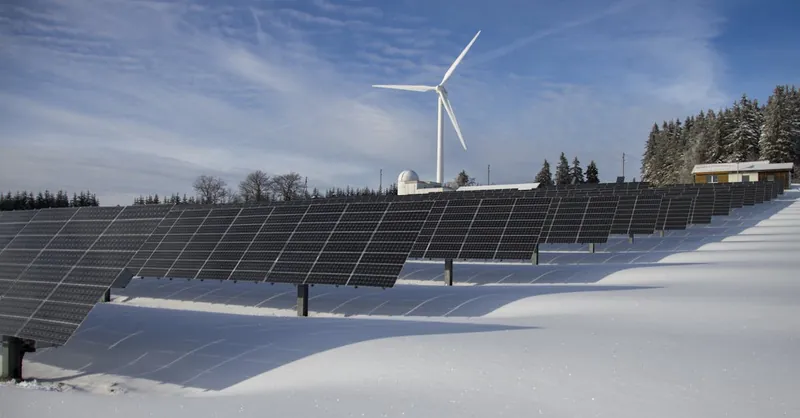
Image courtesy of Pixabay
Grid Modernization and Economic Efficiency Gains
The integration of renewable energy sources like wind and solar catalyzes the transformation of traditional power systems into smarter, more resilient grids—a process known as grid modernization. By leveraging advanced digital technologies, decentralized generation, and real-time data analytics, modern grids can optimize electricity flow, accommodate variable renewable inputs, and improve overall system reliability. This evolution not only enhances energy security but also drives significant economic efficiency gains that benefit utilities, businesses, and consumers alike.
How Renewables Enable Smarter and More Resilient Grids
-
Decentralized Energy Generation and Distributed Resources
Renewable energy systems, especially distributed solar and small-scale wind, reduce the dependence on centralized fossil fuel plants. This decentralization minimizes transmission losses, lowers infrastructure strain, and enhances grid flexibility, translating into cost savings and higher operational efficiency. -
Advanced Grid Management and Automation
Incorporating smart sensors, automated controls, and machine learning algorithms enables grid operators to forecast renewable generation patterns with high accuracy. This predictive capability facilitates better demand response and dynamic load balancing, reducing the need for expensive peaker plants and minimizing curtailment of clean energy. -
Energy Storage and Demand-Side Integration
Modern grids integrate large-scale and behind-the-meter energy storage systems that help smooth intermittency of renewable sources. Alongside demand-side management—such as time-of-use pricing and smart appliances—this reduces peak demand pressures and lowers overall generation costs. -
Enhanced Grid Resilience
Renewable-powered microgrids and islanding capabilities improve the grid’s ability to withstand and recover from disruptions caused by natural disasters or cyber threats. This resilience protects economic activities by reducing outage durations and associated financial losses.
Economic Impacts of Grid Modernization with Renewables
- Lower Operational Costs: Smarter grids optimize generation and distribution, reducing fuel use, maintenance, and peak capacity expenses.
- Improved Asset Utilization: Enhanced visibility and control allow utilities to maximize the lifespan and performance of infrastructure, deferring costly upgrades.
- Facilitated Renewable Integration: Efficient integration of renewables lowers renewable curtailment and maximizes clean energy penetration, leading to long-term savings.
- Increased Consumer Participation: Advanced metering and dynamic pricing encourage energy conservation and load shifting, empowering consumers to reduce bills and contribute to grid efficiency.
In essence, renewable energy acts as a foundational pillar of grid modernization, driving profound economic productivity gains through optimized resource allocation, reduced operational costs, and bolstered system reliability. For engineers and energy professionals, designing and implementing grid technologies that support renewable integration is pivotal to unlocking the full economic potential of the clean energy transition.
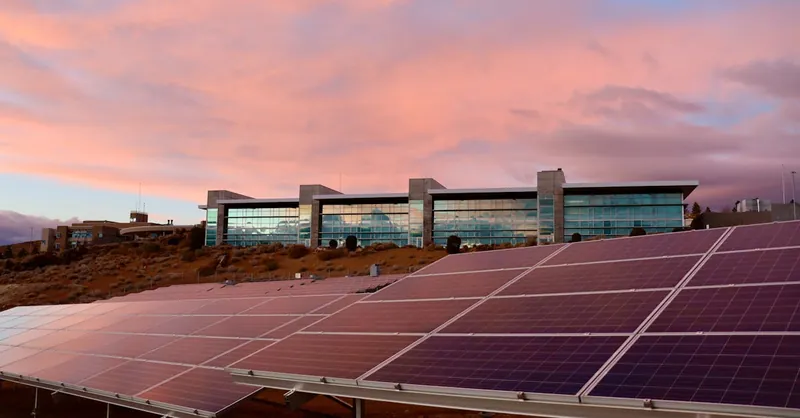
Image courtesy of Manny
Environmental Externalities and Cost Savings: Quantifying the Economic Advantages
A fundamental yet often underestimated economic benefit of renewable energy lies in its ability to drastically reduce environmental externalities—the indirect costs that fossil fuel consumption imposes on society and economies. Unlike traditional energy sources, renewables such as wind and solar produce little to no air pollutants or greenhouse gas emissions, translating into profound cost savings in public health, environmental remediation, and climate change mitigation. Quantifying these savings reveals why investing in renewable resources is not only an ecological imperative but also a smart economic decision for governments, businesses, and communities alike.
Reduced Pollution Drives Health Cost Savings
Air pollution from burning fossil fuels is linked to respiratory diseases, cardiovascular problems, and premature mortality, imposing billions of dollars in healthcare costs annually worldwide. Transitioning to renewable energy significantly lowers emissions of harmful pollutants like sulfur dioxide (SO₂), nitrogen oxides (NOₓ), and particulate matter (PM2.5). Studies show that renewables contribute to:
- Decreased hospital admissions and chronic illnesses
- Lower absenteeism and increased workforce productivity
- Reduced healthcare expenditures at local and national levels
By mitigating these health risks, renewable energy adoption alleviates burdens on healthcare systems and insurance markets, delivering tangible economic dividends.
Climate Change Mitigation and Long-Term Economic Stability
Renewable energy plays a pivotal role in curbing carbon dioxide (CO₂) emissions, a leading driver of climate change. The economic costs of climate-related impacts—including extreme weather events, sea-level rise, agricultural disruptions, and infrastructure damage—are projected to escalate dramatically if fossil fuel dependence persists. Investing in renewables yields:
- Avoided damages and disaster recovery costs
- Stabilization of energy prices by reducing climate-induced market shocks
- Preservation of ecosystem services essential for agriculture and fisheries
Moreover, by reducing carbon pollution, renewables help countries meet international climate commitments and access green finance opportunities, which often come with favorable economic terms.
Holistic Economic Benefits of Environmental Externality Reduction
| Benefit Area | Economic Advantage | Example Impact |
|---|---|---|
| Public Health | Reduced treatment and hospitalization costs | Billions saved annually worldwide |
| Climate Resilience | Lower adaptation and disaster mitigation expenses | Fewer losses from extreme weather |
| Environmental Preservation | Sustained natural resources that support economic activities | Enhanced agricultural productivity |
| Regulatory Compliance | Avoidance of carbon taxes, fines, and litigation costs | Improved profitability for businesses |
By internalizing the external costs of pollution and climate change, renewable energy strengthens the economic case for clean power. For engineers and policymakers, incorporating these factors into project planning and cost-benefit analyses underscores the value proposition of renewables beyond just installation costs, reinforcing their role as keystones of sustainable and financially prudent energy systems.
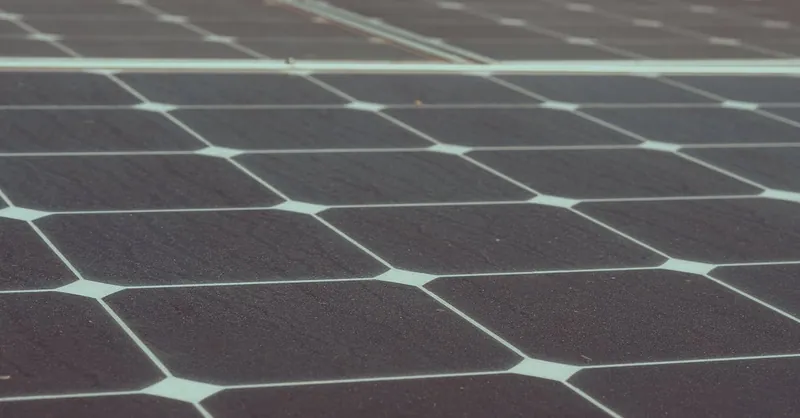
Image courtesy of Kindel Media
Innovation and Emerging Technologies Driving Future Economic Benefits
The next wave of economic growth in renewable energy is being propelled by cutting-edge innovations and emerging technologies that address key challenges such as intermittency, grid integration, and system efficiency. Breakthroughs in advanced energy storage, hybrid renewable systems, and smart grid technologies are unlocking unprecedented economic potentials, creating new markets, and enhancing the value proposition of clean energy investments.
Advanced Energy Storage: Enabling Reliable and Cost-Effective Renewables
One of the most transformative innovations is the rapid advancement of energy storage technologies, especially lithium-ion batteries and next-generation alternatives like solid-state and flow batteries. These storage systems mitigate the variability of wind and solar power by storing excess energy when generation exceeds demand and releasing it during peak consumption. The economic benefits include:
- Grid Stability and Reduced Curtailment: Storage reduces renewable energy wastage, maximizes asset utilization, and lowers system balancing costs.
- Peak Load Management and Cost Savings: By shifting demand from high-price peak hours to low-price off-peak periods, storage decreases energy costs for utilities and consumers.
- Deferred Infrastructure Investments: Implementing storage can postpone or eliminate the need for costly grid upgrades or new peaker plants, significantly reducing capital expenditures.
As storage technologies continue to improve in energy density, lifespan, and cost-effectiveness, they become essential enablers for higher renewable penetration, driving robust economic returns across power markets.
Hybrid Renewable Systems: Harnessing Complementary Energy Sources
Hybrid systems combine multiple renewable energy sources—such as pairing solar with wind or incorporating storage—to optimize power generation profiles and enhance reliability. This integration presents several economic advantages:
- Improved Capacity Factors: Complementary resources balance each other’s variability, increasing overall energy output and improving project profitability.
- Reduced Operational Risks: Hybrid setups diversify revenue streams and minimize exposure to weather-related fluctuations.
- Lower System Costs: Shared infrastructure like transmission, inverters, and control systems reduce capital and operational expenses compared to standalone installations.
Hybrid configurations foster innovation in system design and deployment, unlocking new opportunities for developers and accelerating the transition to resilient, cost-efficient renewable power generation.
Smart Grids: Pioneering Economic Efficiency and Consumer Empowerment
The deployment of smart grid technologies integrates renewables seamlessly into energy systems using advanced communication, automation, and data analytics. Smart grids facilitate:
- Real-Time Demand Response: Dynamic pricing and automated load adjustments promote energy efficiency, reducing peak demand and lowering costs.
- Enhanced Grid Visibility and Control: Intelligent sensors and AI-driven analytics optimize asset management, fault detection, and maintenance scheduling, resulting in operational savings.
- Consumer Participation and Distributed Energy Resources Integration: Smart meters and platforms enable prosumers to participate actively in energy markets, creating new revenue streams and enhancing economic value at the community level.
By enabling greater flexibility and responsiveness in electricity networks, smart grids reduce system bottlenecks and improve the economic viability of variable renewables at scale.
These innovative technologies collectively drive a future where renewable energy is not only abundant and sustainable but also economically superior to conventional energy sources. For electrical engineers, industry leaders, and policymakers, staying abreast of these advancements is critical to designing, investing in, and regulating next-generation renewable systems that maximize economic benefits while supporting global decarbonization efforts.
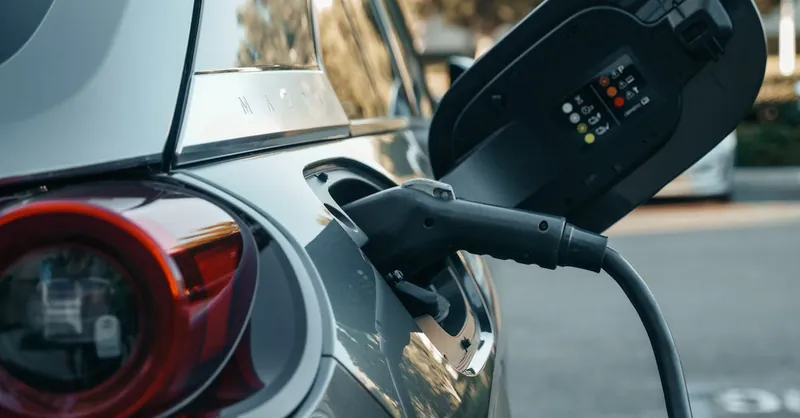
Image courtesy of Kindel Media
